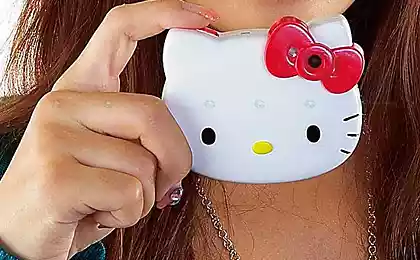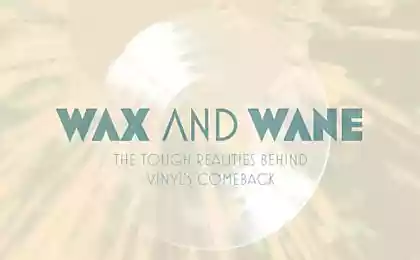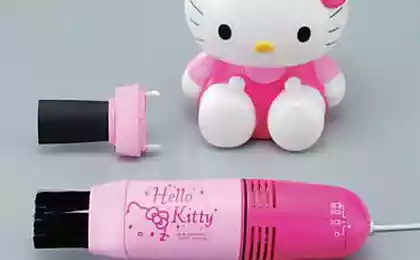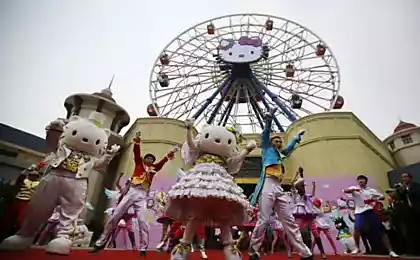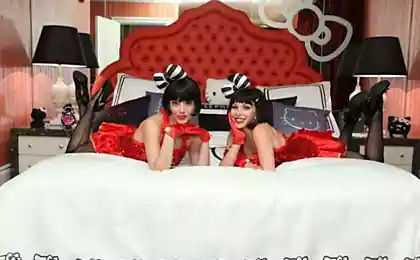1047
World Kitty with bow
Taken here, pictures are collected from the Internet, 6 pictures and text
When in 1974 the designers of the Japanese company Sanrio gifts and souvenirs invented and painted decorations for the next product white kitten, nobody would believe that there was something special. Meanwhile, it clearly was. And so far it is not clear what. Why is now a generation of girls and women is quite mature falls under the spell of hand-drawn kitty?
In the history of licensing fictional characters there are few examples of such a frenzied global popularity, which fell to Hello Kitty. Tens of thousands of product items with the image of this character are now sold in more than 60 countries. Brand brings to $ 5 billion profit a year.

The origins of fashion cuteness (and all that nice little prelestnenkoe), spread from the 1970s and typical primarily for the Japanese culture, profound and fundamental. In 1949, an Austrian psychologist Konrad Lorenz, received the Nobel Prize in the future, prove that infantilism awakens in human specimens reflex care that ensures the survival of a defenseless like appearance. At the same sympathy and the sympathy of the people are not only like. Man positive - with affection and sympathy - and the animal responds. By the way, the scientific term to describe this phenomenon does not sound like something cute - pedomorphosis.
Konrad Lorenz has conducted a series of experiments confirmed that animals with a large head, wide-set eyes, puffy paws and short nose like. Just like them, and nothing can be done automatically. Especially participants of the experiment seemed comely young pets. Not surprisingly, consciously or not, companies have begun to use the results of these studies. Everything cute, has become an excellent marketing tool.
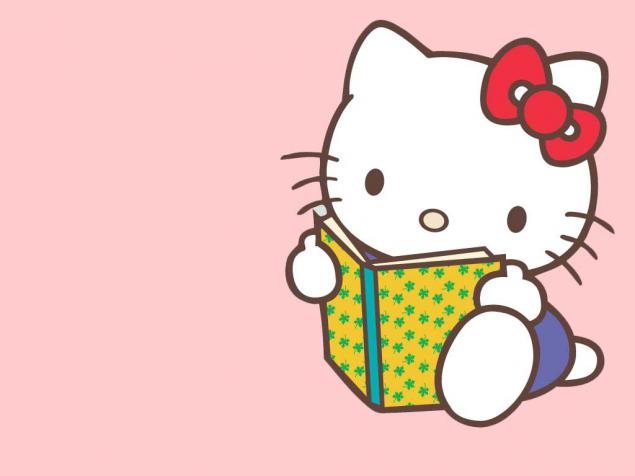
Sanrio, which is considered a trendsetter in the cuteness, said last year's 50th anniversary. Its founder Shintaro Tsuji, a chemist by training, was also a seller of soap, and an official in the municipality, but in 1960, using his connections among politicians, opened a trading company in Tokyo, Yamanashi Silk with a capital of 1 million yen. At that stage of any drawn characters was no question - a company engaged in the silk trade, beach shoes and postcards. Gradually, however, the direction clear. Shintaro, lost his parents early, and spent his childhood deprived of positive emotions in the boarding of the Canadian Christian mission, decided to develop the business of inexpensive gifts, designed for the expression of gratitude and sympathy.
With the concept of "small gift can bring great joy to a child of any age" in 1973 the company began a new life - under the name of Sanrio. For added range of postcards stationery, souvenirs, soft toys, and even children's cosmetics. Strategic moment for such a reversal was well chosen: the economy went uphill, the Japanese finally appeared free money that could be spent on cute, but not that vital things. Shintaro Tsuji also realized that further expand the market may be selling it cheap trinkets. Then the children will be able to buy them for their own pocket money.
The future of the company Sanrio to some extent determined Shintaro Tsuji concluded a contract for the distribution of products with a picture of a dog with a nickname Snoopy - the character of American comics. Successful sales prompted a lot of potential to draw animals. Sanrio commissioned market research and found that the most popular among children were pictures of dogs, cats and bears. The staff of designers offered several options, but the real success came to the company only c appearance in 1974, the image of Hello Kitty, invented by Ikuko Shimizu to decorate the children's wallets.
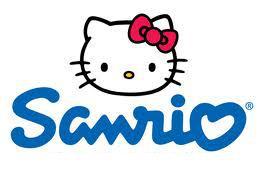
Initially created character was not named. Then it was called White Kitty - in honor of one of the cats Carroll Alice (of Wonderland book while the child was hit in Japan). Subsequently, due to inaccurate translation appeared the name of Hello Kitty.
If you look at Hello Kittu that called attention to the cold, her fair description might look like this: an anthropomorphic white cat breeds bobtail with a red bow on the ear. That's right, but in no way does not reflect the essence of the phenomenon of love to the world, "anthropomorphic" Website articles.
It is important that as a child's toy Hello Kitty is completely safe - it consists of solid roundness and curves. A distinctive feature - the lack of a mouth. Pussy, according to its creators, said heart, of course, in all languages, so much so well that in 1983 she was chosen ambassador child UNICEF. However, in fact, it has not been drawn, the mouth of the fact that this form of character was more versatile. It is not clear, fun cat or sad, and because of the different groups of consumers in the different mood is much easier to identify with it themselves. In the book by Ken Belson and Brian Bremner "The amazing story of Sanrio and the multibillion-cat phenomenon of" the uncertainty of the image associated with the "technique of Zen, allowing Kitty be both princesses for little girls, and a sweet girlfriend for schoolgirls, and a walk down memory lane for adults." And, in fact, created originally for young children, Hello Kitty was interested in all the age groups plus teenage girls, which was a protest against growing up.
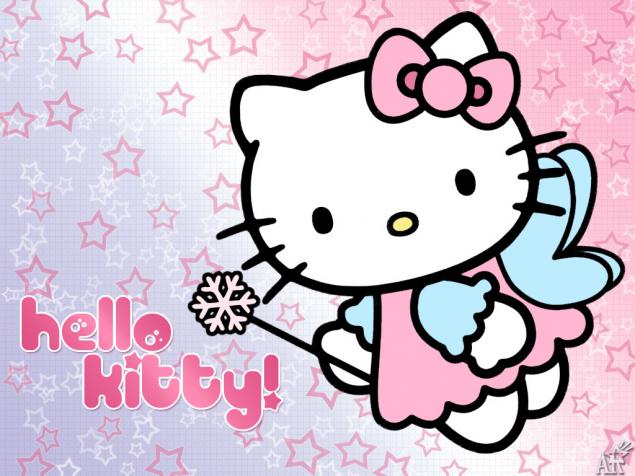
Hello Kitty was not the first and certainly not the only licensed character invented for kids, but stood apart. If only because the other animals were fictional cartoon characters, books, or comics. The same Snoopy, not to mention Mickey Mouse or Donald Duck, has a pronounced character, voice and manner, which can not be said of the silent cat faces an uncertain expression. Kitty wanted a story, and it came up. According to his official biography, Kitty White half an Englishwoman and was born in the suburbs of London, which certainly adds an exotic image, because it all happened at a time when the Japanese still rarely traveled outside the country. Its growth is "five apples" weight - "three apples". She likes apple pie, served her mother, and biscuits that bake her sister. Few, of course, but it's still something.
Despite the apparent lack of content, the image of Hello Kitty has become a sensation and marketing goldmine for Sanrio. With the advent of Kitty company for several years it has doubled the profit. Image cat went like hot cakes in any form: toys, stationery, gifts, accessories and clothing. And this is only the most obvious. Then we went home supplies, electronics, jewelry, vehicles, aircraft, motor oil, Guitar (Hello Kitty Stratocaster) and even "massager for adults." Of the tens of thousands of goods with the image of a cat produces about 6,000 Sanrio, and the rest is produced under license from other companies. Naturally, there are pirated and counterfeit: only in China they are made almost $ 800 million a year.
Even banks have not remained alien charm Kitty. Since 2004, there were bank card MasterCard with a picture of Hello Kitty. In 2010, Bank of America also began to promote checks and cards with the same way for girls from 10 to 15 years, to "inculcate in them skills of handling money." However, although the only debit card offers, online Hello Kitty Debit MasterCard young clients called "buy before you drop» (Shop 'till you drop!).
It is easier to list products on which the Hello Kitty never appeared - weapons, cigarettes and alcohol. It is a legally enforceable right, which, however, in 2010 has been adjusted: in the United States came the first batch of wine Hello Kitty with the slogan "Our girl has grown!».
For decades, the popularity of the character remained huge. And if at the end of the 1970s and in the 1980s, Hello Kitty was considered a new trend in the 1990s, it was already a retro - shops promoted products from the Japanese cat as objects of nostalgia. In the 2000s, the glory of Hello Kitty began to fade. According to The New York Times, sales of Sanrio, which include revenues from its own production and licensing, has been steadily declining since 1999. In May 2010, a Japanese research firm Character Databank conducted a survey showing that Kitty is only the third place in the ranking of popular children's characters among Japanese - anime characters after Anpanmana and Pikachu.
Part of the deal is that Sanrio, initially very cautious about the saturation of the market, as a result began to sell too many products with Hello Kitty, so buyers have begun to tire of this image. Of course, the company also produces other "cuties": more than 400 characters, the most famous of which is the frog Keroppi, bunny My Melody, kids Little Twin Stars. However, none of them reached global popularity of Kitty. It takes time for the promotion of the image in the different countries where it is her glory overshadowing the presence of others. The objective character designers - to create new images, designed for young children to ideally story of Hello Kitty repeated: grown fans would perceive as the toys of his childhood. According to the designer of a new series Jewelpet Sanrio Miyuki Okumura, "if the character wins the heart of a girl, she will love him, and a teenager, and then going to buy this toy for their children».
In any case, regardless of the financial results, Hello Kitty has already taken its place in the Walk of Fame. It is called the muse of contemporary artists. At the prestigious international exhibition of Art Basel Miami in December 2010, she appeared in several guises. Including in the version of "The Last Supper" Jason Alpert. "I called the painting" Pass the ketchup, "and replaced the famous characters in the characters Hello Kitty. So after all fun, is not it? "- Said the artist.
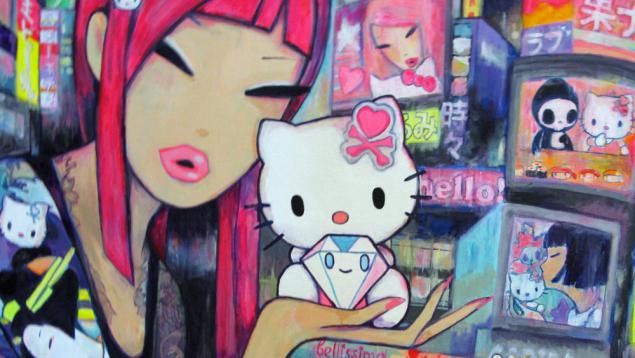
Source: http: //
When in 1974 the designers of the Japanese company Sanrio gifts and souvenirs invented and painted decorations for the next product white kitten, nobody would believe that there was something special. Meanwhile, it clearly was. And so far it is not clear what. Why is now a generation of girls and women is quite mature falls under the spell of hand-drawn kitty?
In the history of licensing fictional characters there are few examples of such a frenzied global popularity, which fell to Hello Kitty. Tens of thousands of product items with the image of this character are now sold in more than 60 countries. Brand brings to $ 5 billion profit a year.

The origins of fashion cuteness (and all that nice little prelestnenkoe), spread from the 1970s and typical primarily for the Japanese culture, profound and fundamental. In 1949, an Austrian psychologist Konrad Lorenz, received the Nobel Prize in the future, prove that infantilism awakens in human specimens reflex care that ensures the survival of a defenseless like appearance. At the same sympathy and the sympathy of the people are not only like. Man positive - with affection and sympathy - and the animal responds. By the way, the scientific term to describe this phenomenon does not sound like something cute - pedomorphosis.
Konrad Lorenz has conducted a series of experiments confirmed that animals with a large head, wide-set eyes, puffy paws and short nose like. Just like them, and nothing can be done automatically. Especially participants of the experiment seemed comely young pets. Not surprisingly, consciously or not, companies have begun to use the results of these studies. Everything cute, has become an excellent marketing tool.

Sanrio, which is considered a trendsetter in the cuteness, said last year's 50th anniversary. Its founder Shintaro Tsuji, a chemist by training, was also a seller of soap, and an official in the municipality, but in 1960, using his connections among politicians, opened a trading company in Tokyo, Yamanashi Silk with a capital of 1 million yen. At that stage of any drawn characters was no question - a company engaged in the silk trade, beach shoes and postcards. Gradually, however, the direction clear. Shintaro, lost his parents early, and spent his childhood deprived of positive emotions in the boarding of the Canadian Christian mission, decided to develop the business of inexpensive gifts, designed for the expression of gratitude and sympathy.
With the concept of "small gift can bring great joy to a child of any age" in 1973 the company began a new life - under the name of Sanrio. For added range of postcards stationery, souvenirs, soft toys, and even children's cosmetics. Strategic moment for such a reversal was well chosen: the economy went uphill, the Japanese finally appeared free money that could be spent on cute, but not that vital things. Shintaro Tsuji also realized that further expand the market may be selling it cheap trinkets. Then the children will be able to buy them for their own pocket money.
The future of the company Sanrio to some extent determined Shintaro Tsuji concluded a contract for the distribution of products with a picture of a dog with a nickname Snoopy - the character of American comics. Successful sales prompted a lot of potential to draw animals. Sanrio commissioned market research and found that the most popular among children were pictures of dogs, cats and bears. The staff of designers offered several options, but the real success came to the company only c appearance in 1974, the image of Hello Kitty, invented by Ikuko Shimizu to decorate the children's wallets.

Initially created character was not named. Then it was called White Kitty - in honor of one of the cats Carroll Alice (of Wonderland book while the child was hit in Japan). Subsequently, due to inaccurate translation appeared the name of Hello Kitty.
If you look at Hello Kittu that called attention to the cold, her fair description might look like this: an anthropomorphic white cat breeds bobtail with a red bow on the ear. That's right, but in no way does not reflect the essence of the phenomenon of love to the world, "anthropomorphic" Website articles.
It is important that as a child's toy Hello Kitty is completely safe - it consists of solid roundness and curves. A distinctive feature - the lack of a mouth. Pussy, according to its creators, said heart, of course, in all languages, so much so well that in 1983 she was chosen ambassador child UNICEF. However, in fact, it has not been drawn, the mouth of the fact that this form of character was more versatile. It is not clear, fun cat or sad, and because of the different groups of consumers in the different mood is much easier to identify with it themselves. In the book by Ken Belson and Brian Bremner "The amazing story of Sanrio and the multibillion-cat phenomenon of" the uncertainty of the image associated with the "technique of Zen, allowing Kitty be both princesses for little girls, and a sweet girlfriend for schoolgirls, and a walk down memory lane for adults." And, in fact, created originally for young children, Hello Kitty was interested in all the age groups plus teenage girls, which was a protest against growing up.

Hello Kitty was not the first and certainly not the only licensed character invented for kids, but stood apart. If only because the other animals were fictional cartoon characters, books, or comics. The same Snoopy, not to mention Mickey Mouse or Donald Duck, has a pronounced character, voice and manner, which can not be said of the silent cat faces an uncertain expression. Kitty wanted a story, and it came up. According to his official biography, Kitty White half an Englishwoman and was born in the suburbs of London, which certainly adds an exotic image, because it all happened at a time when the Japanese still rarely traveled outside the country. Its growth is "five apples" weight - "three apples". She likes apple pie, served her mother, and biscuits that bake her sister. Few, of course, but it's still something.
Despite the apparent lack of content, the image of Hello Kitty has become a sensation and marketing goldmine for Sanrio. With the advent of Kitty company for several years it has doubled the profit. Image cat went like hot cakes in any form: toys, stationery, gifts, accessories and clothing. And this is only the most obvious. Then we went home supplies, electronics, jewelry, vehicles, aircraft, motor oil, Guitar (Hello Kitty Stratocaster) and even "massager for adults." Of the tens of thousands of goods with the image of a cat produces about 6,000 Sanrio, and the rest is produced under license from other companies. Naturally, there are pirated and counterfeit: only in China they are made almost $ 800 million a year.
Even banks have not remained alien charm Kitty. Since 2004, there were bank card MasterCard with a picture of Hello Kitty. In 2010, Bank of America also began to promote checks and cards with the same way for girls from 10 to 15 years, to "inculcate in them skills of handling money." However, although the only debit card offers, online Hello Kitty Debit MasterCard young clients called "buy before you drop» (Shop 'till you drop!).
It is easier to list products on which the Hello Kitty never appeared - weapons, cigarettes and alcohol. It is a legally enforceable right, which, however, in 2010 has been adjusted: in the United States came the first batch of wine Hello Kitty with the slogan "Our girl has grown!».
For decades, the popularity of the character remained huge. And if at the end of the 1970s and in the 1980s, Hello Kitty was considered a new trend in the 1990s, it was already a retro - shops promoted products from the Japanese cat as objects of nostalgia. In the 2000s, the glory of Hello Kitty began to fade. According to The New York Times, sales of Sanrio, which include revenues from its own production and licensing, has been steadily declining since 1999. In May 2010, a Japanese research firm Character Databank conducted a survey showing that Kitty is only the third place in the ranking of popular children's characters among Japanese - anime characters after Anpanmana and Pikachu.
Part of the deal is that Sanrio, initially very cautious about the saturation of the market, as a result began to sell too many products with Hello Kitty, so buyers have begun to tire of this image. Of course, the company also produces other "cuties": more than 400 characters, the most famous of which is the frog Keroppi, bunny My Melody, kids Little Twin Stars. However, none of them reached global popularity of Kitty. It takes time for the promotion of the image in the different countries where it is her glory overshadowing the presence of others. The objective character designers - to create new images, designed for young children to ideally story of Hello Kitty repeated: grown fans would perceive as the toys of his childhood. According to the designer of a new series Jewelpet Sanrio Miyuki Okumura, "if the character wins the heart of a girl, she will love him, and a teenager, and then going to buy this toy for their children».
In any case, regardless of the financial results, Hello Kitty has already taken its place in the Walk of Fame. It is called the muse of contemporary artists. At the prestigious international exhibition of Art Basel Miami in December 2010, she appeared in several guises. Including in the version of "The Last Supper" Jason Alpert. "I called the painting" Pass the ketchup, "and replaced the famous characters in the characters Hello Kitty. So after all fun, is not it? "- Said the artist.

Source: http: //




